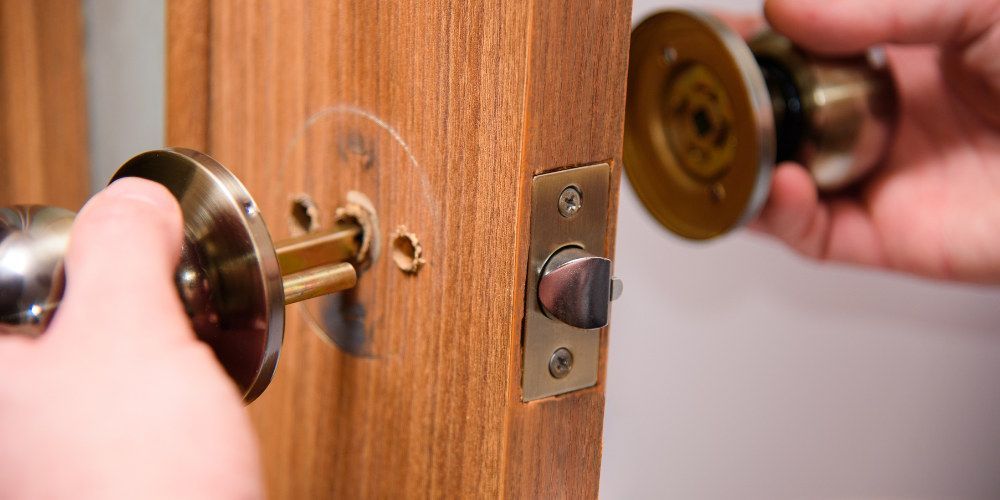Can You Replace a Door Knob with a Deadbolt?
Thinking about swapping out that old door knob for a sturdier deadbolt? You’re not alone. Many homeowners look for ways to boost their home security, and replacing a door knob with a deadbolt can be a smart move. But before you grab your toolbox and start drilling, let's dive into whether this switch is feasible and what you need to know to get the job done right.
Understanding the Differences Between Door Knobs and Deadbolts
First things first, let’s break down the basics. Door knobs and deadbolts serve different purposes. A door knob is typically used for interior doors where security isn’t a major concern, while deadbolts are designed for exterior doors, providing a higher level of security. Deadbolts are much harder to force open compared to standard door knobs, making them a preferred choice for safeguarding your home. So, if you’re considering the switch for increased security, you’re on the right track.
Can You Replace a Door Knob with a Deadbolt?
Now, let’s get to the big question: Can you actually replace a door knob with a deadbolt? The answer is... it depends. The feasibility of this replacement largely hinges on your door type and the existing hole sizes. Most standard doors can accommodate both door knobs and deadbolts, but you might need to make some adjustments. For instance, if the hole for your door knob isn’t the right size for a deadbolt, you’ll need to enlarge it. Additionally, some door materials might not be ideal for deadbolt installation. It's crucial to assess your specific door situation before proceeding.
Tools and Materials You’ll Need
Ready to tackle the job? Here’s a quick rundown of the tools and materials you’ll need:
- Deadbolt lock set
- Power drill and various drill bits
- Screwdriver
- Measuring tape
- Chisel (if adjustments to the door frame are necessary)
- Safety goggles and gloves
Having the right tools on hand can make the process smoother and more efficient. Make sure to double-check the instructions that come with your deadbolt for any specific requirements.

Step-by-Step Guide to Replacing a Door Knob with a Deadbolt
Alright, let’s get into the nitty-gritty. Here’s a step-by-step guide to help you replace your door knob with a deadbolt:
- Remove the Existing Door Knob: Start by unscrewing and removing the existing door knob and latch plate.
- Measure and Mark: Use your measuring tape to mark the appropriate spot for the deadbolt on your door. Ensure it aligns with the strike plate on the door frame.
- Drill New Holes: If necessary, use your drill to create the new holes for the deadbolt. This might involve enlarging the existing hole or drilling a new one altogether.
- Install the Deadbolt: Follow the manufacturer’s instructions to install the deadbolt, ensuring all components are securely in place.
- Test the Lock: Once installed, test the deadbolt to ensure it operates smoothly and securely.
It might sound a bit daunting, but with patience and precision, you can do it!
Benefits of Using a Deadbolt Over a Door Knob
Switching to a deadbolt isn’t just about a slight upgrade – it’s a significant boost in security. Deadbolts are designed to withstand much more force than door knobs, making them a robust option for keeping intruders at bay. They offer added peace of mind, knowing that your home is better protected against break-ins. Plus, deadbolts tend to be more durable, reducing the need for frequent replacements.
When to Consider Professional Help
Even with the best DIY intentions, sometimes it’s wise to call in a pro. If you encounter issues like misaligned holes or if the door material is tricky to work with, a professional locksmith can save you a lot of hassle. They have the expertise and tools to ensure the deadbolt is installed correctly and securely. When in doubt, don’t hesitate to seek professional help to avoid compromising your home’s security.
Conclusion
So, can you replace a door knob with a deadbolt? Absolutely – with the right tools and a bit of know-how, it’s a feasible project for many homeowners. Remember, this upgrade is not just about functionality but significantly enhances your home’s security. If you’re unsure about any part of the process, consider consulting a professional to get it done right. Happy DIY-ing, and stay safe!
Call Us Any Time!






